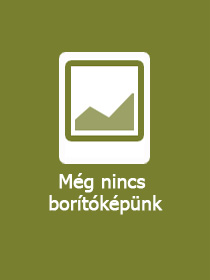
Oil and Gas Waste Governance
State Politics of Induced Seismicity in Ohio and Oklahoma
Sorozatcím: Routledge Research in Public Administration and Public Policy;
-
10% KEDVEZMÉNY?
- A kedvezmény csak az 'Értesítés a kedvenc témákról' hírlevelünk címzettjeinek rendeléseire érvényes.
- Kiadói listaár GBP 52.99
-
26 818 Ft (25 541 Ft + 5% áfa)
Az ár azért becsült, mert a rendelés pillanatában nem lehet pontosan tudni, hogy a beérkezéskor milyen lesz a forint árfolyama az adott termék eredeti devizájához képest. Ha a forint romlana, kissé többet, ha javulna, kissé kevesebbet kell majd fizetnie.
- Kedvezmény(ek) 10% (cc. 2 682 Ft off)
- Discounted price 24 136 Ft (22 987 Ft + 5% áfa)
26 818 Ft

Beszerezhetőség
Még nem jelent meg, de rendelhető. A megjelenéstől számított néhány héten belül megérkezik.
Why don't you give exact delivery time?
A beszerzés időigényét az eddigi tapasztalatokra alapozva adjuk meg. Azért becsült, mert a terméket külföldről hozzuk be, így a kiadó kiszolgálásának pillanatnyi gyorsaságától is függ. A megadottnál gyorsabb és lassabb szállítás is elképzelhető, de mindent megteszünk, hogy Ön a lehető leghamarabb jusson hozzá a termékhez.
A termék adatai:
- Kiadás sorszáma 1
- Kiadó Routledge
- Megjelenés dátuma 2025. május 28.
- ISBN 9781032797182
- Kötéstípus Keménykötés
- Terjedelem168 oldal
- Méret 216x138 mm
- Nyelv angol
- Illusztrációk 5 Illustrations, black & white; 5 Line drawings, black & white; 20 Tables, black & white 700
Kategóriák
Rövid leírás:
In this book, the editors explore unconventional oil and gas production, earthquakes, and how they relate to the broader conversation centering on private property, energy production and the role of science within the public policy process. Utilizing a unique national-level dataset, the book tests a new model of event-driven policy change.
TöbbHosszú leírás:
In Oil and Gas Waste Governance, Zachary Mahafza, Joseph A. Aistrup, Jonathan M. Fisk, and Lorraine W. Wolf tell the story of unconventional oil and gas production, earthquakes, and how they both relate to the much broader conversation centering on private property, energy production and the role of science within the public policy process, and environmental sustainability.
Utilizing a unique national-level dataset that includes human-induced earthquakes associated with oil and gas development between 2006 and 2018, the book combines insights on focusing/tipping events, media, geoscience, and state-choice to develop and test a new model of event-driven policy change. Examining the politics of induced seismicity at the national level as well as in Ohio and Oklahoma, the authors demonstrate how event severity and frequency interact with political and social considerations and, in turn, contribute to administrative decision-making. Oil and Gas Waste Governance offers a much-needed examination of seismicity in Public Administration and Public Policy.
This book provides an explicit overview of the challenges and complexities involved in implementing and adapting regulatory policies to manage induced seismicity from oil and gas production in the shale energy producing states.
Sarmistha Majumdar, Chair of Political Science & Public Administration, Texas Southern University
Energy development has many complex social and environmental impacts. In this book, Mahafza et al. evaluate the challenge of human induced seismicity, that is, earthquakes related to the underground injection of oil and gas' wastes?an issue that is increasingly salient in the current era of energy abundance. The interdisciplinary team of authors describes the evidence for induced seismicity, particularly from injection wells, the policy regimes governing induced seismicity, and associated state responses, with detailed looks at responses in Oklahoma and Ohio. They conclude by offering valuable lessons learned that can be applied to the management of waste from other energy sources.
Adam Mayer, Research Scientist, Colorado State University
This is a well written book that offers a comprehensive and informative analysis of oil and gas waste management policies aimed at dealing with the risks associated with production activities. Drilling for oil and gas in the U.S. slowed in the middle twentieth century but rebounded following the use of hydraulic fracturing (fracking) technology to access energy resources lying beneath rock formations. But greater use of fracking processes resulted in a corresponding rise in man-made seismic risk on or near drilling sites (often referred to as induced seismicity). Project authors focus upon decisions made by key stakeholders to address quake related impacts in affected states, notably Ohio and Oklahoma in an effort to balance costs with benefits. The concluding chapter provides an especially useful discussion of best practices used to guide state officials attempting to cope with quake related damages.
Charles Davis, Professor emeritus, Colorado State University
TöbbTartalomjegyzék:
Introduction. Chapter 1: Oil and Gas? Wastes and Governance. Chapter 2: Which Events Lead to Change? Chapter 3: The National Picture. Chapter 4: Oil and Gas Wastes in Ohio. Chapter 5: Oil and Gas Wastes in Oklahoma. Chapter 6: The Landscape Going Forward and Lessons Learned
Több









